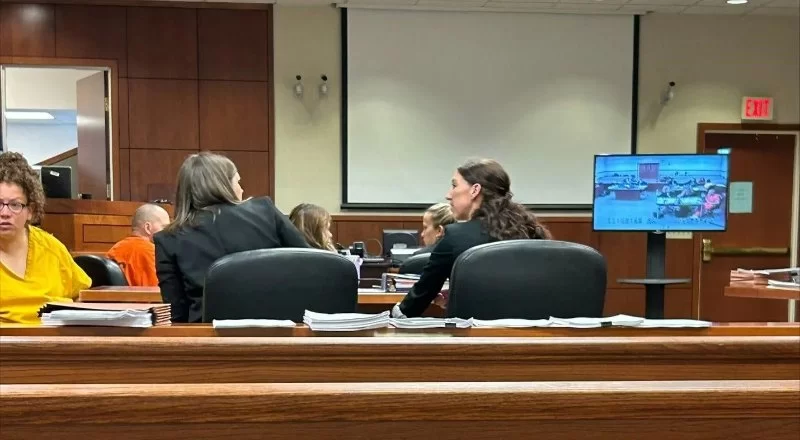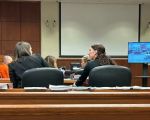
- what-is-the-innocence-project - What Is the Innocence Project?
- the-role-of-judicial-cooperation-in-wrongful-conviction-cases - The Role of Judicial Cooperation in Wrongful Conviction Cases
- how-the-innocence-project-works-across-legal-systems - How the Innocence Project Works Across Legal Systems
- notable-cases-that-highlight-cooperation - Notable Cases That Highlight Cooperation
- challenges-in-international-judicial-coordination - Challenges in International Judicial Coordination
- the-impact-of-dna-evidence-and-digital-forensics - The Impact of DNA Evidence and Digital Forensics
- how-legal-support-accelerates-justice - How Legal Support Accelerates Justice
1. What Is the Innocence Project?
The Innocence Project is a legal advocacy organization that seeks to exonerate individuals who have been wrongfully convicted of crimes. Founded in 1992 by Barry Scheck and Peter Neufeld, it gained global recognition for using DNA evidence to uncover miscarriages of justice—especially in cases where the original trials lacked scientific rigor or fair representation.
While its roots are in the U.S., the Innocence Project's influence has sparked the rise of similar initiatives worldwide. It emphasizes not just individual exoneration, but systemic reform, making it a powerful force for change in criminal justice systems globally.
2. The Role of Judicial Cooperation in Wrongful Conviction Cases
2.1 A Matter of Shared Responsibility
Judicial cooperation is critical in wrongful conviction cases. When state, national, and sometimes international judicial systems work together, they can expedite case reviews, facilitate evidence sharing, and overcome procedural barriers. Without such cooperation, innocent individuals may remain incarcerated due to bureaucracy and jurisdictional silos.
2.2 Multilateral Agreements and Extradition
In some cases, such as when a suspect or witness is in another country, cooperation under treaties like the Hague Convention or bilateral extradition agreements becomes essential. Collaborative legal frameworks ensure that time-sensitive evidence isn’t lost across borders.
3. How the Innocence Project Works Across Legal Systems
3.1 Advocacy Beyond Borders
The Innocence Project has developed a network of legal professionals, investigators, and academic researchers who coordinate across jurisdictions. Whether it's navigating differing standards of evidence or appealing to foreign courts, their role is to create alignment in pursuit of justice.
3.2 Partnering with Local and International Legal Teams
To address global cases, the project often collaborates with local counsel or nonprofit organizations specializing in post-conviction advocacy. In complex or high-profile matters, firms like ESPLawyers offer critical support by providing jurisdiction-specific legal insight and helping prepare robust evidentiary submissions.
4. Notable Cases That Highlight Cooperation
4.1 The Anthony Wright Case
In 2016, Anthony Wright was exonerated after serving 25 years in prison. DNA testing—originally denied—eventually proved another man committed the crime. The Innocence Project worked closely with state prosecutors, the judiciary, and forensic labs, showing that cooperation, even after conviction, can reverse life-altering mistakes.
4.2 The UK-US Exoneration Collaboration
A lesser-known transatlantic case involved a British man whose conviction in Florida was overturned thanks to a UK-based legal aid charity working in tandem with the Innocence Project. This highlighted the potential of judicial collaboration to bridge legal gaps and serve justice beyond national borders.
5. Challenges in International Judicial Coordination
5.1 Legal System Incompatibility
One major challenge is differing standards of evidence, appeals processes, and rights recognition. A case that would qualify for review in one country might be barred in another due to procedural rules. Language barriers and diplomatic sensitivities can also slow proceedings.
5.2 Resource and Bureaucratic Constraints
Smaller countries or underfunded courts may lack the infrastructure to reexamine old cases thoroughly. Additionally, government agencies are sometimes reluctant to admit errors, even when new evidence emerges. This is where external pressure from human rights organizations and legal activists becomes essential.
6. The Impact of DNA Evidence and Digital Forensics
6.1 Revolutionizing Case Re-evaluation
DNA testing has been the cornerstone of the Innocence Project's success. Modern forensic technologies have redefined how evidence is analyzed—often revealing flaws in older testing methods that led to wrongful convictions.
6.2 The Role of Digital Tools
Beyond biology, digital forensics—such as timestamped phone records, location data, and surveillance footage—have helped verify alibis or expose misconduct. The integration of these tools into legal proceedings has become a key asset in overturning outdated verdicts.
7. How Legal Support Accelerates Justice
7.1 Legal Teams as Catalysts for Reform
Pro bono attorneys, private law firms, and nonprofit legal services are often at the center of successful exoneration efforts. They bring legal experience, procedural understanding, and negotiation skills that can move cases through resistant courts. Strategic legal guidance can also shine a light on systemic flaws in need of reform.
7.2 Partnering with Specialists
Working with firms like ESPLawyers allows advocacy organizations to navigate region-specific legal nuances. Their experience with complex litigation, human rights law, and judicial negotiation enhances the efficiency and effectiveness of Innocence Project initiatives.








